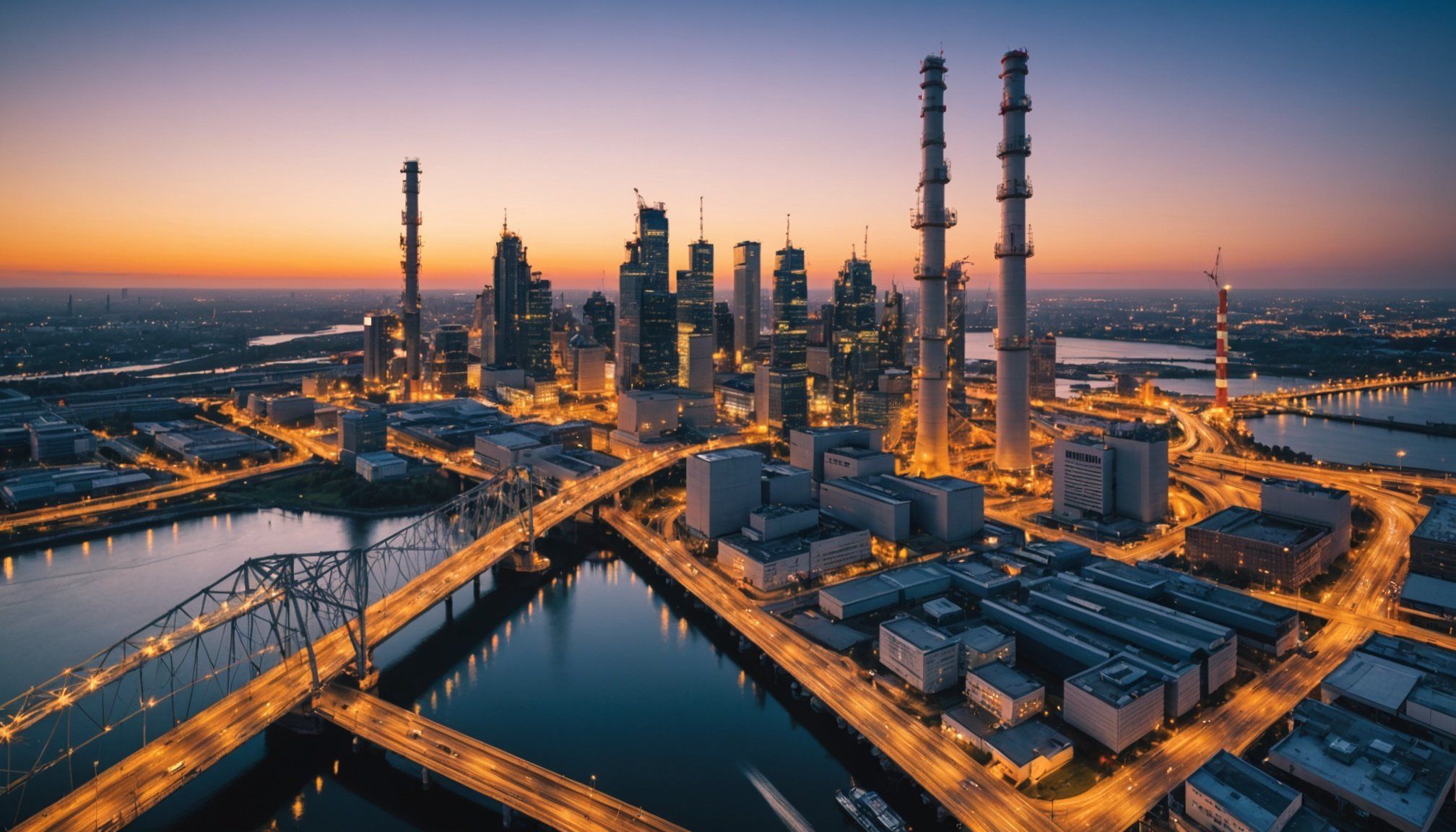The Role of AI in Building Resilience in Critical Infrastructure
AI’s impact on critical infrastructure is profound, transforming how resilience is fortified. AI in critical infrastructure involves deploying advanced technologies to bolster system strength and adaptability. One key aspect is enhancing system robustness, where AI predictively identifies faults and vulnerabilities, ensuring swift resolutions before issues escalate.
Predictive analytics is a cornerstone of AI resilience strategies. By analysing vast amounts of data in real-time, AI forecasts potential disruptions and trend anomalies, enabling pre-emptive measures. Such foresight in decision-making is invaluable, especially in sectors like energy and transportation, where unplanned outages can have far-reaching consequences.
Additional reading : Designing a scalable and resilient network framework for iot solutions: an in-depth guide
The integration of AI with existing infrastructure technologies presents a seamless evolution towards smarter, more resilient systems. AI interfaces with legacy systems, enhancing their capabilities without necessitating complete overhauls. This synergy allows for a hybrid approach, merging traditional reliability with modern adaptability.
By employing AI-driven analytics and machine learning, infrastructure managers can make informed decisions, significantly reducing response times and enhancing uptime and continuity. Through innovative mechanisms, AI strengthens infrastructure resilience, ensuring systems can withstand and swiftly recover from various challenges, offering stability in an increasingly unpredictable world.
In parallel : Building an innovative machine learning model for real-time fraud detection to drive e-commerce excellence
In summary, AI plays a pivotal role in crafting an adaptable and robust infrastructure framework, an essential component for future-proofing our critical systems.
Frameworks and Strategies for AI Empowerment
Implementing AI frameworks across various sectors requires strategic planning and industry-specific best practices. Organisations should first assess their current technological landscape and identify areas where AI can deliver the most value. Ensuring that the framework aligns with the organization’s goals and industry standards is essential. For instance, in the healthcare sector, AI frameworks must prioritize patient confidentiality and data integrity.
Resilience strategies play a crucial role in maintaining the functionality and robustness of AI systems. This involves developing proactive measures to manage risks and adapting swiftly to technological changes. Cross-industry collaboration can further strengthen resilience by sharing insights and resources. Industries can learn from each other, potentially transforming challenges into opportunities for growth and innovation.
Data governance is pivotal in managing AI applications responsibly. Effective security measures protect sensitive data, maintaining public trust and complying with regulatory standards. By implementing comprehensive data governance policies, sectors can ensure data accuracy and protect against breaches.
Industries can harness AI’s full potential by combining robust AI frameworks with collaborative resilience strategies and stringent data governance. This not only drives innovation but also secures long-term success across different domains.
Case Studies of AI Implementation in Critical Infrastructure
Exploring the real-world applications of AI in critical infrastructure reveals innovative solutions that are transforming various sectors.
Utilities
In the utilities sector, AI has revolutionized grid management and energy distribution. Through predictive analytics, AI systems can anticipate both energy demand and potential disruptions. This allows for better allocation of resources, ensuring a steady supply and less downtime. In outage prediction, AI contributes significantly by analyzing patterns and forecasting potential failures. This enables companies to implement pre-emptive measures, significantly decreasing the duration and impact of outages.
Transportation
AI has made substantial contributions to traffic management and predictive maintenance. For example, dynamic traffic light management systems utilizing AI reduce congestion by adapting to real-time traffic data. In rail systems, AI-driven predictive maintenance monitors equipment health, foreseeing component failures before they occur. This leads to improved safety and efficiency, reducing costly breakdowns and service interruptions.
Telecommunications
In telecommunications, AI excels in network optimization and fraud detection. By automating network adjustments and predicting service demands, AI strengthens service reliability. Fraudulent activities are swiftly identified through advanced machine learning algorithms, safeguarding the network and its users. These real-world applications exemplify how AI is reshaping the telecommunications landscape, enhancing performance and customer satisfaction.
Challenges and Considerations in AI Adoption
AI adoption presents distinct challenges and considerations that organizations must navigate. One significant hurdle is the limitations of AI technologies in critical environments, where flawless performance is essential. AI’s capability to self-learn can lead to unexpected outcomes, necessitating vigilant oversight. Developers must work to improve AI algorithms to minimize errors.
Another key consideration is the regulatory and compliance landscape. AI technologies must align with existing laws governing privacy, data security, and ethical use. Regulatory bodies continue to establish new guidelines, which organizations need to follow closely to avoid potential penalties. This evolving nature of compliance regulations requires adaptability and frequent updates to AI systems.
Internal resistance poses another barrier for companies looking to implement AI solutions. Employees may fear that AI adoption could replace jobs or disrupt established workflows. Effective communication strategies can help mitigate these concerns by highlighting AI’s potential to augment human efforts rather than replace them.
Additionally, organizations should invest in training programs to equip staff with the skills needed to work alongside AI technologies. By addressing these implementation hurdles, companies can enhance their operational efficiency while maintaining compliance and gaining employee buy-in. Ultimately, proactive management of AI challenges can pave the way for successful integration.
Future Trends in AI for Critical Infrastructure
In the rapidly evolving landscape of artificial intelligence (AI), the future holds promising innovations that could revolutionise infrastructure resilience. As we move into this forward-thinking era, it’s important to consider how emerging technologies, notably 5G and the Internet of Things (IoT), are set to impact AI applications. These technologies offer significant potential to enhance connectivity and data processing, making AI-driven solutions more feasible and effective.
The future of AI in critical infrastructure is poised to integrate these technologies, leading to more robust and adaptable systems. For example, 5G’s enhanced speeds and reduced latency could facilitate real-time monitoring and response systems, crucial in maintaining infrastructure resilience. Similarly, the proliferation of IoT devices can provide comprehensive data networks, enabling AI systems to predict and mitigate potential issues before they escalate.
With these advancements, expectations for AI’s role in crafting sustainable and adaptable infrastructure solutions are high. As we continue to explore and integrate these emerging technologies, AI could greatly enhance our ability to maintain and protect critical infrastructure against growing challenges, ensuring a resilient future for global societies. By embracing these trends, stakeholders can look forward to infrastructure that is not only smarter but also better equipped to face future demands.










